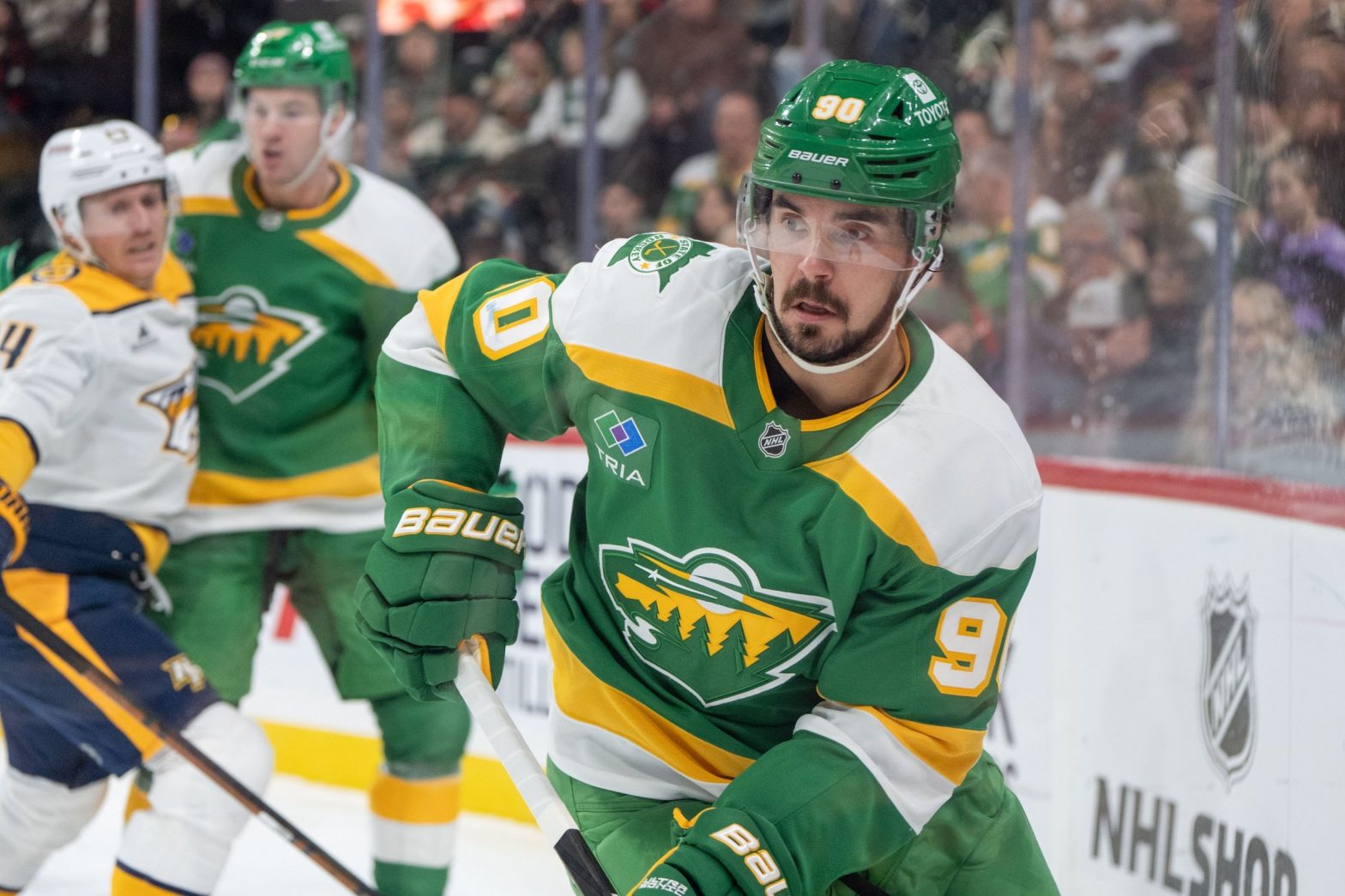When the Minnesota Wild re-signed Marcus Johansson to a one-year, $800,000 extension this week, it meant that the veteran winger from Landskrona, Sweden, will almost certainly play in his 1,000th career NHL game this season while wearing a Minnesota Wild sweater.
Of the 16-year NHL veteran’s 983 regular-season games, 206 have been with the Wild. At this point, it’s fair to say that the player and organization have a comfort level and familiarity with each other that supersede the unknowns that come with free agency.
Johansson has often been a lightning rod for criticism during his time in Minnesota, despite generally solid underlying numbers indicative of a player who has outperformed his modest salary more often than not from a value standpoint.
Still, he has also developed a reputation as a player who plays harder during his contract years. He has unnerved a segment of the fan base with his perceived lack of physical play, and because the Wild have often used him in a top-six role.
There may be validity to some of the criticism aimed at him. Still, if Johansson repeated his 2024-25 numbers next season, he’ll almost certainly be one of the most productive veteran players in his salary range. 34 points in 72 games isn’t elite production, but no team pays an unrestricted free agent (UFA) $800k and expects elite production.
Of the 90 NHL skaters that earned $1 million or less last season on contracts signed as UFAs, here are the top point producers (data from PuckPedia):

Johansson is a good bet to end up near the top of this list next season. But beyond production, why do the Wild value him enough to bring him back for his fifth season with the team?
Where do his solid underlying numbers come from?
Despite what some might think, Johansson offers value to an NHL lineup. One of the keys to understanding his value is to recognize he’s an excellent skater who covers a lot of ice. He’s also a responsible, intelligent player who reads plays well and is almost always in the right position away from the puck.
That is the key factor with Johansson; many fans spend most of their time watching the puck. However, Johansson excels at positioning himself away from the puck and using his anticipation and strong skating to get to the right place at the right time and influence play, especially in the defensive and neutral zones.
These attributes become evident when watching Johansson regularly. Choose any game, and you’ll find plenty of clips that exemplify why he has value. That’s exactly what I did.
“Value” is the key word. He’s not an elite, high-level contributor. But he’s a valuable piece on a roster and is one of the reasons why the Wild have been a strong defensive team every year.
You’ll notice that none of the clips below show a goal or assist, or even a slick zone entry through traffic, something that Johansson does quite well. Instead, they depict small but meaningful moments within a game that contribute to team success.
Let’s start with a clip that shows his strong skating, play recognition, and positioning:
Johansson often has strong positioning and denies passing lanes, which you start to notice when you watch him away from the puck.
Here’s another good example, this time in the defensive zone:
If you question how Johansson is a valuable defensive contributor, these two clips help explain what he’s doing off the puck.
As mentioned, one of the key aspects of Johansson’s game is his strong skating, which enables him to cover a lot of ice. According to NHL Edge, he’s one of the fastest forwards in the league in top skating speed and speed bursts. He also rates high among forwards in terms of distance skated:

Here’s an example of how he accrues these numbers:
That clip showcased several excellent plays and exemplified what strong hockey sense and positioning can provide within a sequence.
Here’s another one that occurs in the offensive zone:
The final clip is short and something that is not readily noticeable within the flow of a game. Still, it demonstrates exactly why the Wild trust Johansson so much. He’s a responsible player who will make the right decision more often than not, even in situations where most players wouldn’t:
So, there you have it. A lot of what Johansson does won’t show up on a scoresheet and will only become evident in advanced stats through high repetition and large sample sizes. However, that’s exactly what NHL teams want. Predictability over volatility. Unflappability versus uncertainty.
Players like Sammy Walker, Adam Beckman, Gerry Mayhew, or Liam Ohgren haven’t stuck as NHL regulars because they haven’t demonstrated the ability to do these things every single game. For Ohgren, that time may come as soon as next season, but it hasn’t yet.
A player who can’t do them needs to provide significant value elsewhere. If they can’t, they’re a liability, not a contributor. And in the best league in the world, liabilities get exploited.
It’s fair to argue about where the Wild should deploy Johansson in a lineup and whether other players should get more ice time, but there’s no questioning his utility as an NHL player.
So, it’s probably safe to predict that Marcus Johansson will play his 1,000th NHL game sometime next season. When the league awards him with a commemorative silver stick to celebrate his accomplishment, it will be an opportunity to appreciate a player who’s made a career out of predictability. You can bet the Minnesota Wild will.
https://hockeywilderness.com/news-rumors/minnesota-wild/marcus-johnassons-value-is-hes-aways-in-the-right-spot-r30746/
